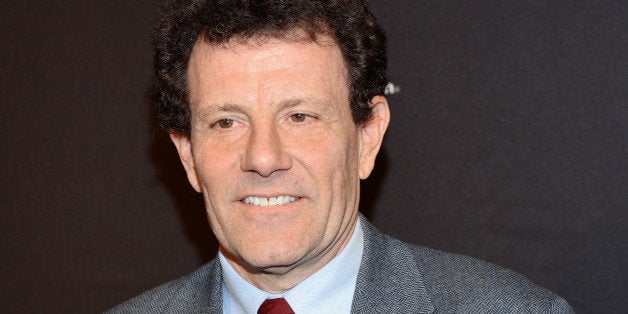
There's a video floating around that shows Rupert Neate, a reporter from The Guardian, being heaved out of the Shot Show because he walked up to the Smith & Wesson display and began asking a company employee about an assault rifle ban. This conversation took place as a member of Smith & Wesson's marketing team happily placed an assault rifle in Neate's hands and kept referring to it as a "modern sporting rifle," although to be fair the gun, known as the AR-15 Sporter, fires only an itty-bitty 22-caliber cartridge, as opposed to the more lethal 5.56 or .223 military calibers that most so-called modern sporting rifles use.
This nonsense about how a remarkably-lethal weapon used by our armed forces has been transmogrified into a "sporting" gun by the gun industry for the last twenty years has been going on since the imposition of the 10-year assault weapons ban back in 1994. The gun industry first reacted to the ban by claiming that "assault" weapons were fully-automatic guns used only by the military; hence, any semi-automatic rifle deserved to be sold in the civilian market regardless of its design. And when the ban was not renewed in 2004, the industry went whole hog in trying to convince everyone that an AR-15 gun, as long as it didn't fire more than one shot with each pull of the trigger, was no different from Grandpa's old Remington or Winchester hunting rifle except it had a more modern look.
In arguing against any new attempt to impose a new assault weapons ban, the gun industry has cited again and again the Koper study, published as the ban was expiring, which could not, according to the author, definitively determine the effects of the ban on rates of gun crime. But this study, commissioned by the Department of Justice, has also been cited by proponents of a ban as showing that changing the design of assault rifles and limiting the capacity of all semi-automatic gun magazines did, in fact, result in a reduction of gun crime. So once again it's the old story in the gun debate: pro-gun advocates saying that government regulation doesn't work, gun-control advocates saying it does.
Out of the woodwork we now have a major gun-control voice joining up with Gun Nation to proclaim that the assault weapons ban was a dud. And the voice belongs to none other than the New York Times, whose Pulitzer Prize-winning editorialist, Nicholas Kristof, has decided to share this "inconvenient truth" with his liberal colleagues in an evident attempt to get the GVP community to be more realistic and honest in its approach to guns. To quote Kristof, the gun debate should be driven by "evidence of what works," and what didn't work was the assault weapons ban. To quote Kristof again, the law was "poorly drafted" and didn't reduce gun crimes during the ten years it was in effect.
Far be it from me to challenge the ability of a Harvard and Oxford-educated journalist to read his sources clearly, but I have read the Koper report several times and Kristof's attempt to align its contents with the views of the pro-gun mob just doesn't work. First and foremost, the report compared only a few years of data before and after the ban when nearly all of the pre-ban guns were still in circulation and a majority of pistols were equipped with hi-cap mags. Furthermore, very few police jurisdictions collected data on magazine capacity of guns picked up at crime scenes, and the vaunted tracing data of the vaunted ATF turned out to be useless at best.
If Koper's report says anything, it says that attempting to evaluate the impact of a weapons ban which expired before sufficient data even existed was an exercise that simply could not succeed. Which is much different from concluding that the ban didn't work. Kristof is correct in asking for evidence, not opinions, to shape the gun debate. He might show the way by doing it himself.
